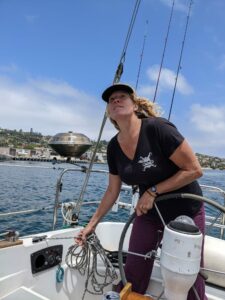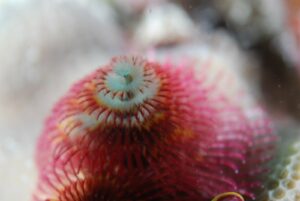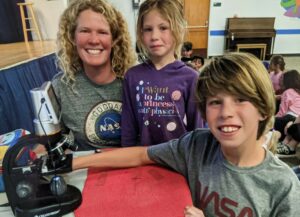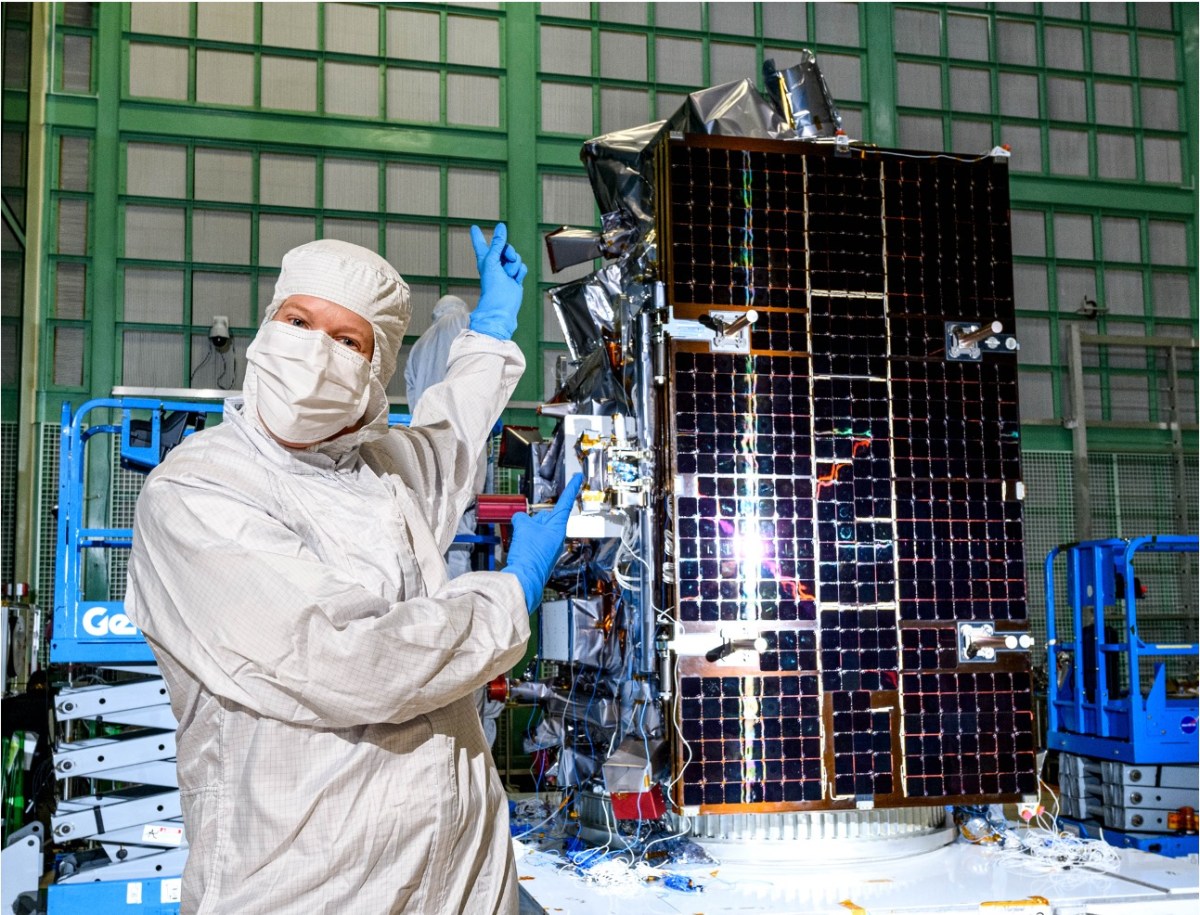Bridget Seegers is an oceanographer at NASA’s Goddard Space Flight Center in Greenbelt, Maryland and a team member for NASA’s Plankton, Aerosol, Cloud, ocean Ecosystem (PACE) mission.

What is your favorite atmosphere or ocean related book or movie?
“Life Aquatic” definitely comes to mind. It’s amazingly accurate in how it depicts certain aspects of life on a research vessel. For a book, there’s one called “The Long Way” by Bernard Moitessier. It’s about him sailing solo in a race around the world, way back in the day (1968), which is very interesting.
What is your research about?
I focus on harmful algal blooms. There are a lot of little, teeny organisms called phytoplankton in the ocean and lakes, and sometimes they grow into huge numbers, and we call that a bloom. That can be good because it feeds the food web, but sometimes it can be toxic and cause problems. People monitor those harmful events to reduce human exposure to any of the harmful toxins. I use satellites to monitor for these harmful events and help water quality managers respond to them.

What was your favorite part of watching the launch?
The PACE team, friends, and families being together sharing all the excitement, hugs, and emotions was my favorite part of launch. It was incredible watching the rocket light up the night as PACE began its journey to space! And, of course, fantastic to hear updates throughout launch and since that all is well with PACE and the instruments. All wonderful experiences!
What are you most looking forward to post-launch?
The data and exactly what we can do with it. There’s been a lot of talks and hopes of what this data will be like, but there’s never been a satellite like PACE. We can imagine all these products, but it’ll be great to see what we actually can do with the products. If we can tell one type of phytoplankton from another, we can hopefully tell some of the more harmful ones from ones that are just average members of the phytoplankton community that aren’t causing problems.
We know that OCI on PACE is going to be able to look at all the colors of the ocean, so what is your favorite color and why?
My favorite color is purple. Why? I don’t know, it just feels right.

Do you have a favorite type of phytoplankton or sea creature?
I think my favorite sea creature would be Christmas tree worms. They live on coral reefs and they like pop out and they look like an evergreen tree. They come in all these different colors. When you get close, they like pull themselves in, but then they pop back up. They’re really fun and colorful, and they’re kind of interactive. For phytoplankton, there are a variety of species that bioluminesce and I think that’s pretty magical when you see the ocean light up at night, either with breaking waves or running your hands through it.

What is a fun fact about yourself?
I like to sail. I had a friend who solo circumnavigated the globe, so I met him to sail in a variety of places like around French Polynesia, around nearly half of South Africa, and north of the Arctic Circle in this chain of islands called the Lofoten Islands. I was also able to surf north of the Arctic Circle from the sailboat!
What advice would you give to aspiring scientists who are looking to get where you are today?

Stay curious and be motivated by asking questions. Follow what interests you and what you’re passionate about. It’s not always a direct path and science can be a little bit tedious, so it’s really important to trust yourself and to pursue things that are interesting to you. Ask questions and don’t be afraid to chat with other scientists. Sometimes people think scientists are intimidating, but we’re mostly pretty nice and slightly awkward, so I would have those conversations!
What is one catch-all statement describing the importance of PACE?
Knowledge is power. For both PACE and science in general, the more information we have the better we understand things, and the more able we are to respond to the changing planet in an effective and meaningful way that empowers us.
Header image caption: Bridget with the PACE observatory. Image Credit: Dennis Henry
By Erica McNamee, Science Writer at NASA’s Goddard Space Flight Center

